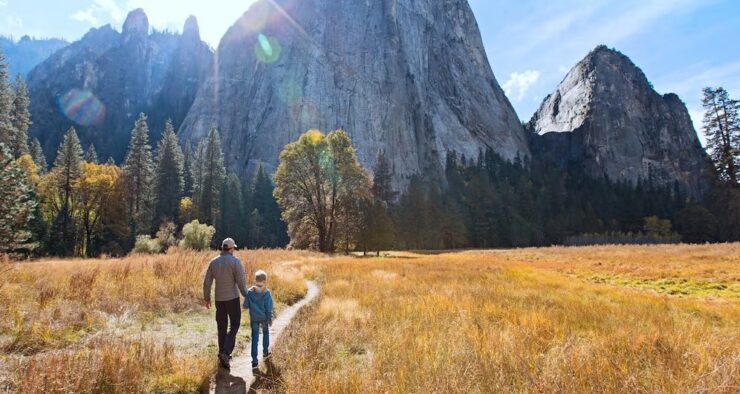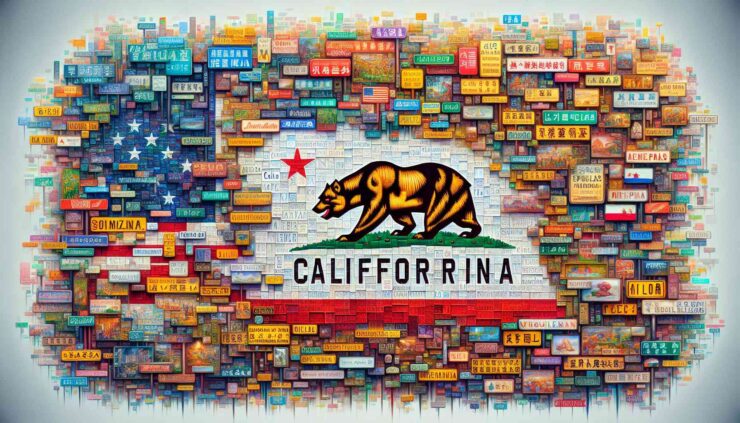Thinking about moving to California? Before you pack your bags and hit the road, there are a few important things you need to know. California is a diverse and dynamic state, and understanding what to expect can make your transition smoother and more enjoyable. In this California relocation guide, I’ll share 11 essential tips to help you navigate your move to the Golden State.
Table of Contents
Key Takeaways:
- Understanding the need for transportation and the necessity of owning a car is crucial in most towns and cities in California.
- California’s direct democracy system allows residents to propose ballot initiatives and shape state policies.
- The California State University system offers in-state tuition rates, making higher education more affordable.
- Remember that moving to California doesn’t guarantee a dramatic change in happiness, so it’s important to maintain realistic expectations.
- Consider the distinct differences in culture, climate, and lifestyle between Northern and Southern California when choosing where to live.
Transportation and Car Necessity
When it comes to getting around California, having a car is essential for most residents. Unless you live in San Francisco where public transit options are more extensive, owning your own transportation is a necessity in this expansive state. Public transit options in most towns and cities are limited, and low-density communities often require the convenience of a car to access essential services and amenities.
Driving in California comes with its own unique experience – the infamous traffic. Congestion on the roads is a common feature of California life, especially in major metropolitan areas. So, be prepared to navigate through traffic and plan your commute accordingly.
Ultimately, having a car gives you the freedom to explore the diverse landscapes and attractions that California has to offer. From the stunning coastline to the majestic mountains, having your own transportation allows you to venture out and make the most of your time in the Golden State.
Public Transit Options
While public transit options may be limited in many parts of California, there are still some alternatives to consider. Major cities like Los Angeles and San Diego have public transportation systems, including buses and light rail, that can be used for commuting within the city. Additionally, there are regional transit agencies that provide services to connect different cities and regions within the state.
For those who prefer to rely on public transportation, it’s important to research the available options in your specific area. While it may not be as comprehensive as in other states, utilizing public transit can still be a viable choice for commuting, reducing traffic congestion, and minimizing your environmental impact.
When considering your transportation options in California, it’s important to evaluate the specific needs of your lifestyle and the accessibility of public transit in your chosen location. Owning a car may be the preferred choice for most residents, but exploring alternative transportation methods can also be an option worth considering.
| Pros of Having a Car | Cons of Having a Car |
|---|---|
| Flexibility and convenience | Traffic congestion |
| Accessibility to remote areas | High cost of car ownership |
| Ability to travel on your own schedule | Parking challenges in urban areas |
| Convenience for shopping and errands | Environmental impact |
Direct Democracy and Ballot Initiatives

When it comes to shaping state policies and laws, Californians have a unique power and opportunity. The direct democracy system in California allows citizens to propose ballot initiatives, effectively giving them a voice in the decision-making process. This method of direct democracy empowers residents to actively participate in shaping the future of the Golden State.
One of the most well-known examples of the influence of citizen-proposed ballot initiatives is Proposition 8. This controversial initiative, which sought to define marriage as being between a man and a woman, sparked a heated debate and ultimately led to significant legal and social changes in California. It serves as a striking testament to the power of direct democracy in the state.
The Power of Citizen Participation
“The direct-democracy system in California offers residents the opportunity to directly influence state policies and laws through ballot initiatives. It is a powerful tool that allows citizens to actively participate in shaping the future of the Golden State.”
The direct democracy system in California is unique and sets the state apart from others in the country. It ensures that the voices of everyday Californians are heard and considered in the political process. This approach to governance encourages citizens to engage with the issues that matter most to them and have a direct impact on the laws that govern their lives.
Through citizen-proposed ballot initiatives, Californians have tackled a wide range of issues, including those related to social equality, environmental protection, healthcare, and education. These initiatives often spark spirited debates and discussions, highlighting the diversity of opinions and the passionate engagement of Californians in their communities.
The direct-democracy system offers an intriguing alternative to the traditional legislative process by allowing citizens to bypass politicians and bring important matters directly to the attention of the voting public. It ensures that the will of the people has a direct route into the decision-making process, making California an example of true democracy in action.
It’s worth noting that the direct democracy system also presents its challenges. Ballot initiatives can sometimes be complex and convoluted, and understanding them fully may require additional research and analysis.
| Pros of Ballot Initiatives | Cons of Ballot Initiatives |
|---|---|
| Empowers citizens | Can be complex and confusing |
| Ensures direct participation in the decision-making process | Can result in unintended consequences |
| Allows for the expression of diverse opinions and values | Can be subject to influence and manipulation |
While the direct-democracy system in California may have its complexities, it remains a powerful tool for citizen engagement and a noteworthy characteristic of the state’s governance. By participating in the electoral process, residents have the opportunity to shape the policies and laws that impact their lives, making California a true beacon of democratic principles.
California State University System

California is home to the largest state university system in the country. The California State University (CSU) system offers a wide range of educational opportunities for residents, making higher education more accessible and affordable.
One of the key benefits of the CSU system is the availability of in-state tuition rates for California residents. This means that students who are residents of California can attend CSU campuses at a lower cost compared to out-of-state or international students.
Attending a CSU campus not only provides a quality education but also allows students to take advantage of the diverse academic and extracurricular offerings. The CSU system comprises 23 campuses across the state, each with unique programs and specialties.
Whether you’re interested in pursuing a degree in business, engineering, liberal arts, or any other field, there is a CSU campus that caters to your academic interests and career goals. The CSU system is renowned for its commitment to hands-on learning, research opportunities, and faculty expertise.
Here is a snapshot of some of the top CSU campuses:
| CSU Campus | Location | Notable Programs |
|---|---|---|
| California State University, Long Beach | Long Beach | Business, Engineering, Nursing |
| San Diego State University | San Diego | Communication, Public Health, Psychology |
| California State University, Fullerton | Fullerton | Education, Health Sciences, Performing Arts |
| California Polytechnic State University, San Luis Obispo | San Luis Obispo | Engineering, Agriculture, Architecture |
| San Francisco State University | San Francisco | Creative Arts, Ethnic Studies, Biology |
Attending a CSU campus not only provides access to excellent academic programs but also opens doors to a vast network of alumni and industry connections. Many CSU campuses have strong ties to local businesses and organizations, providing students with internship and career opportunities.
Whether you are considering higher education for yourself or your children, the California State University system offers an affordable and reputable pathway to achieving your educational goals.
Happiness and Quality of Life
When considering a move to California, many people have high expectations about the happiness and quality of life they will experience in the Golden State. However, it’s important to approach the move with realistic expectations. A famous psychological study found that there is no significant difference in happiness between California residents and those living in the Midwest. So, moving to California does not guarantee a radical change in happiness.
While California offers a multitude of opportunities and a diverse range of experiences, it’s essential to remember that happiness is not solely dependent on geographical location. Factors such as personal relationships, career satisfaction, and overall well-being play a significant role in one’s happiness and quality of life.
Instead of solely relying on the idea that moving to California will automatically bring happiness, it’s crucial to consider other aspects of your life that contribute to your well-being. Building strong social connections, pursuing meaningful work, and maintaining a healthy work-life balance are some of the key elements that can enhance your overall happiness and quality of life, regardless of where you live.
“Happiness is not a destination, it’s a way of life.”
By setting realistic expectations and focusing on personal growth and fulfillment, you can create a positive and satisfying life for yourself in California. Remember, it’s not just about where you live, but how you choose to live.
| Factors | Impact on Happiness |
|---|---|
| Personal Relationships | High |
| Career Satisfaction | Moderate |
| Work-Life Balance | Moderate |
| Health and Well-being | High |
| Financial Stability | Moderate |
| Access to Nature and Outdoor Activities | Moderate |
Northern and Southern California Differences
When considering a move to California, it’s important to understand that Northern and Southern California each have their own distinct cultures and weather patterns. Whether you prefer a cooler climate or dry and sunny weather, your choice of location can greatly impact your lifestyle in the Golden State.
In Northern California, cities like San Francisco offer a unique blend of a cooler and more atmospheric climate. The region is known for its iconic fog, which rolls in from the Pacific Ocean and blankets the city. The mild summers and wet winters create lush green landscapes and provide a refreshing escape from sweltering heat. Northern California is also home to beautiful national parks like Yosemite, a paradise for outdoor enthusiasts.
On the other hand, Southern California, with cities like San Diego, offers a different experience with its warm and sunny weather. This region boasts a Mediterranean climate, characterized by hot and dry summers, and mild, rainy winters. The consistent sunshine allows for a vibrant outdoor lifestyle, with endless opportunities for beach days, outdoor sports, and exploring the desert landscapes. Southern California is also famous for its thriving entertainment industry and iconic attractions like Disneyland.
Climate Comparison
| Region | Temperature | Precipitation | Key Features |
|---|---|---|---|
| Northern California | Mild summers and wet winters | Higher precipitation | Fog, lush green landscapes, national parks |
| Southern California | Hot and dry summers, mild winters | Lower precipitation | Consistent sunshine, Mediterranean climate, outdoor lifestyle |
Whether you gravitate towards the cooler and more atmospheric climate of Northern California or the dry and sunny weather of Southern California, the choice ultimately depends on your weather preferences and desired lifestyle. Both regions offer unique opportunities and attractions, so it’s essential to consider these differences when deciding where to settle in the state.
Outdoor Activities and Nature

California is a paradise for nature lovers and outdoor enthusiasts. Whether you’re seeking breathtaking landscapes, thrilling adventures, or serene environments, the Golden State has it all. With its diverse geography, ranging from mountains to coastal areas, California offers a wide range of outdoor activities that cater to every preference and interest.
Exploring National and State Parks
One of the highlights of California’s natural beauty is its extensive network of national and state parks. From the iconic Yosemite National Park, known for its majestic waterfalls and granite cliffs, to the stunning Redwood National and State Parks, home to the world’s tallest trees, there are endless opportunities for exploration and adventure.
Here is a list of some must-visit national and state parks in California:
- Yosemite National Park
- Joshua Tree National Park
- Redwood National and State Parks
- Sequoia and Kings Canyon National Parks
- Death Valley National Park
- Point Reyes National Seashore
- Channel Islands National Park
Whether you’re hiking through breathtaking landscapes, camping under the stars, or simply enjoying a picnic in nature, California’s national and state parks offer unforgettable experiences for nature enthusiasts.
Mountain Adventures
For those seeking outdoor thrills and stunning panoramic views, California’s mountains provide the perfect playground. From the Sierra Nevada range to the San Gabriel Mountains, these majestic peaks offer a wide variety of activities, including:
- Hiking
- Mountain biking
- Rock climbing
- Skiing and snowboarding
Whether you’re conquering challenging trails or enjoying a scenic chairlift ride, California’s mountains offer something for everyone, regardless of skill level.
Beachside Bliss
California’s coastline is renowned for its stunning beaches and surf culture. With miles of sandy shores, picturesque coves, and world-class waves, the state provides countless opportunities for beachgoers to soak up the sun, take a refreshing swim, or try their hand at surfing. Some popular beach destinations in California include:
- Malibu
- Santa Monica
- Laguna Beach
- Santa Cruz
- San Diego
Whether you’re a seasoned surfer or a beachcomber looking for tranquility, California’s beaches offer the perfect blend of natural beauty and coastal charm.
With its abundance of outdoor activities and natural wonders, California truly is a haven for nature enthusiasts. From the awe-inspiring national parks to the thrilling mountain adventures and relaxing beachside bliss, there’s no shortage of ways to connect with nature and explore the great outdoors in the Golden State.
| Activity | Description |
|---|---|
| Hiking | Explore scenic trails and breathtaking landscapes |
| Surfing | Ride the waves along California’s renowned coastline |
| Skiing and Snowboarding | Hit the slopes in California’s picturesque mountain resorts |
| Camping | Experience the serenity of nature under the starry skies |
| Rock Climbing | Challenge yourself on the vertical cliffs of California’s mountains |
| Mountain Biking | Ride exhilarating trails and take in stunning mountain views |
Cultural Diversity and Language

California is renowned for its vibrant cultural diversity, which is one of the state’s defining characteristics. With a population composed of people from various ethnic backgrounds and cultures, California offers a truly multicultural experience. Embracing this diversity can enrich your stay in the Golden State, allowing you to explore different traditions, cuisines, and perspectives.
One significant aspect of California’s cultural diversity is the wide array of languages spoken throughout the state. While English is the primary language, you’ll also encounter a multitude of other languages, reflecting the rich linguistic tapestry of California’s residents. Learning a second language, particularly Spanish, can be immensely beneficial when navigating this diverse landscape.
Spanish is widely spoken in California, making it the state’s second most prevalent language. It is not uncommon to hear Spanish being spoken in everyday interactions, as well as in business settings. By learning Spanish, you can effectively communicate with local communities and facilitate meaningful connections. Moreover, expanding your linguistic skills opens doors to new friendships and cultural experiences.
In addition to Spanish, you may encounter other languages depending on the specific communities or neighborhoods you explore. From Mandarin and Tagalog to Korean and Vietnamese, California’s diverse linguistic landscape reflects the state’s global connections and rich immigrant history.
Exploring the multifaceted language and cultural diversity in California can be an enriching experience, enabling you to broaden your perspectives, challenge assumptions, and foster intercultural understanding. So, whether you’re strolling through San Francisco’s vibrant Chinatown, enjoying the lively atmosphere of Los Angeles’ Koreatown, or immersing yourself in the art and food of Little Saigon in San Jose, embracing California’s cultural diversity is a rewarding path to a more inclusive and fulfilling experience.
Conclusion
Moving to California can be an exciting adventure, but it’s important to be well-informed before making the leap. By considering the essential factors mentioned in this article, you can better prepare yourself for the challenges and opportunities that await you in the Golden State.
First and foremost, transportation is a key consideration. While public transit options may be limited in most towns and cities, having your own car is essential for navigating the vast landscapes and potential traffic congestion. Additionally, familiarizing yourself with California’s direct-democracy system and the power of citizen-proposed ballot initiatives can help you understand how residents shape state policies and laws.
Furthermore, California’s state university system offers in-state tuition rates, making higher education more accessible. Whether you have children or plan to pursue your own academic goals, this is an invaluable resource to consider. However, it’s important to note that moving alone does not guarantee happiness. Approach the move with realistic expectations, understanding that geography alone does not determine one’s contentment.
Lastly, California’s diverse culture and natural beauty provide endless opportunities for outdoor activities and personal growth. Embrace the multiculturalism, explore the national and state parks, mountains, and beaches, and consider learning Spanish to further enrich your experience and connect with local communities.
FAQ
Do I need a car in California?
Yes, having a car is essential in California as public transit options are limited in most towns and cities.
What is the direct-democracy system in California?
California has a direct-democracy system where citizens can propose ballot initiatives to shape state policies and laws through the ballot.
Is higher education more affordable in California?
Yes, California’s state university system is the largest in the country and offers in-state tuition rates for residents, making higher education more affordable.
Will moving to California make me happier?
Moving to California does not guarantee a radical change in happiness. It’s important to approach the move with realistic expectations.
What are the differences between Northern and Southern California?
Northern and Southern California have distinct cultures and weather patterns. San Francisco offers a cooler climate, while San Diego provides dry and sunny weather.
What outdoor activities can I enjoy in California?
California offers numerous opportunities for outdoor activities such as hiking, skiing, surfing, and camping, thanks to its national parks, mountains, and beaches.
Is California a multicultural state?
Yes, California is a multicultural state with a diverse population. Embracing cultural diversity can enrich your experience in the Golden State.
What factors should I consider before moving to California?
When moving to California, it’s important to consider transportation, housing, cost of living, job opportunities, and cultural diversity.













